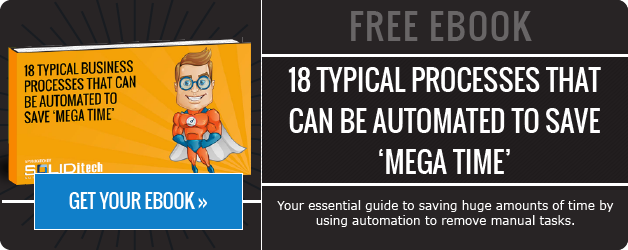As professionals in the automation industry it’s our job to keep up with the latest trends, news and (least we feel out-geeked)...'Jargon'.
But sometimes, every now and again, along comes a term or TLA (Three Letter Acronym) that you’re not entirely sure about - resulting in an 'ahh - sure(?)' moment.
Perhaps it's just me, but I've certainly had my fair share of those moments. And if I've hesitated to Google a few things here and there, I'll bet some of you busy professionals have too.
So I've put together some of the more frequently used terms and acronyms for you to check out or brush up on - leaving your browser search history none the wiser.
1. ISP
ISP stands for Internet Service Provider. An ISP is a company that provides access to the Internet or other Internet services for either personal or business users.
2. Order Fulfillment
Order fulfillment refers to the process of fully completing a customer's purchase from point of sale to full activation of all their services. The order fulfillment process can be broken down into 3 steps - Receiving, processing and delivery of the order.
This is slightly different to Provisioning which is detailed below.
3. Provisioning
Provisioning (within the telecommunications industry) specifically refers to the act of setting up or configuring the necessary hardware and software to activate a customer's purchased services.
4. Order Orchestration
Order Orchestration is the management of the processes that support planning, logistics, configuration, pricing and fulfillment.
Typically automated, it defines the policies and service levels of automated workflows, provisioning and change management to ensure processes are efficient and consistent.
5. ERP
Enterprise Resource Planning (ERP) is business management software that integrates core business functions into one complete system to streamline processes across an entire organisation. ERP's leverage a sliding scale of automation and range from comparatively simple to fully automated.
Functions that are typically integrated with an ERP are those related to back office (operations, product planning, development, manufacturing, sales and marketing), technology, services and human resources.
ERP's tend to be used by larger organisations or those with very complicated and multi-layer processes such as ISP's and Manufacturers.
6. OSS
Operations Support Systems (OSS) are used by telecommunication companies to manage their networks and support back-office activities such as provisioning and to maintain customer services.
7. BSS
Business Support Systems (BSS) are used by telecommunication companies to manage front-office activities such as billing, order management, customer support and collections.
8. CRM
Customer Relationship Management (CRM) is a series of processes, typically managed by software, to manage the full lifecycle of your customers from lead generation to retention.
9. Workflow
A Workflow is a manual or automated task or process that runs sequentially from beginning to end. For example, the steps you undertake every month to invoice your customers is a Workflow.
Automated Workflows are the backbone of business automation software.
10. JAVA
(Spoiler: It’s not your favourite coffee)
Java is a modern, object-oriented programming language. It can be used to create entire applications that run on a single device or a distributed network. One of the most popular and widely used programming languages, it's used in projects like Android and enterprise level software packages like SOLID.
11. Extensible
An extensible software program is one that has been designed with future growth in mind. It has been designed such that users or developers can expand or add to its capabilities.
This allows a software program to 'grow' with a business, rather than the business needing to select a more appropriate solution later down the line.
12. ESD
An Electronic Signer Device (ESD) is a device that adds a digital certification to an invoice to prove authenticity before it is sent to a customer. It’s use is mandated by law in some parts of Africa.
13. Dunning
Dunning (aka Collections) is the process of communicating with customers to collect payments due. Tools within this process can include invoices, emails, sms/text messages or phone calls.
Is there anything we've left off the list? Let us know in the comments below. If you'd like to know more about business automation, check out blog post "Everything You Need To Know About Business Process Automation".








Comment